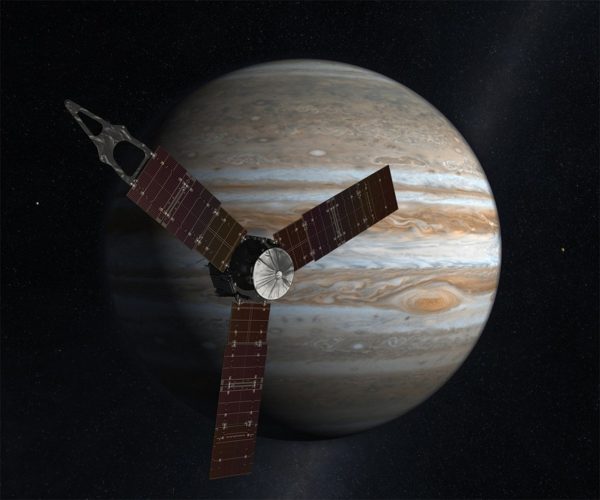
NASA has plunged three spacecraft into gas giants. Two of them, Galileo and Cassini, were at the ends of their missions when they met their doom in the atmospheres of Jupiter and Saturn, respectively. But the Galileo spacecraft arrived with a passenger — a probe designed to drop into a gas giant atmosphere.
NASA lost contact with the Galileo probe after about an hour, when it had reached 93 miles (150 kilometers) into Jupiter’s atmosphere. Scientists aren’t sure how deep the probe got before it was destroyed by Jupiter’s high pressures and temperatures. But could we one day send a spacecraft deeper into a gas giant such as Jupiter or Saturn? Given that these enormous planets may not have a solid surface on which to crash, could a spacecraft fly through a gas giant?
According to Leigh Fletcher, an associate professor of planetary science at the University of Leicester in the United Kingdom, the short answer is “no.” A spacecraft could not survive a trip through a gas giant.
The problem with trying to fly through a gas giant is that “the density, pressure and temperature all increase to such enormous levels as you penetrate down into the interior,” Fletcher told Live Science. Near the center of Jupiter, the normally gaseous hydrogen becomes a liquid metal, making this region “as exotic as the surface of the sun,” he continued.

